The world depends on snow and ice for everything from water to sun-reflection. But thanks to global warming, big parts of the Earth’s cryosphere have already disappeared.
By Bob Berwyn
Quark Expedition guides stand on the shore of Paulet Island, near the tip of the Antarctic Peninsula, as a pair of inflatable dinghies maneuver through icebergs. Climate scientists are keeping a close eye on Antarctica’s coastal ice masses, as a warming ocean threatens to destabilize huge sections of the cryosphere in this region.
According to some recent studies
, the warming could reach a tipping point that would result in several feet of global sea level rise by the end of the century. (Photo: Bob Berwyn)
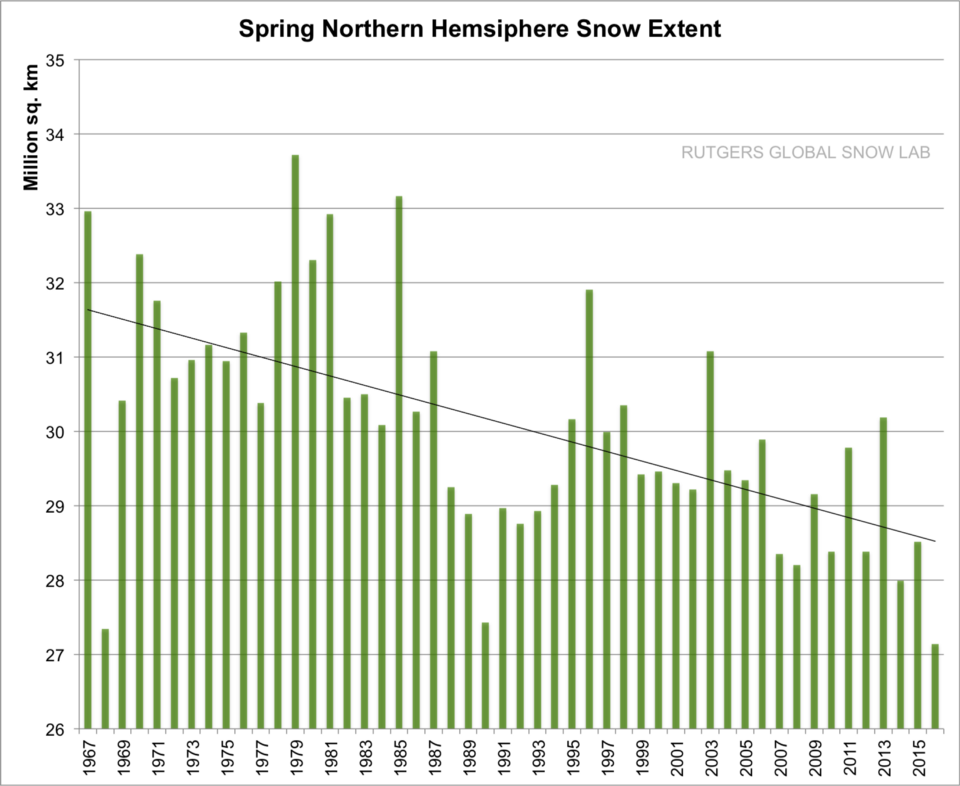
The Rutgers Global Snow Lab tracks hemispheric snow cover extent.
In the age of global warming, one thing is certain: There will be less ice and snow. Glaciers, ice shelves, and sea ice are melting away, and there has been a dramatic drop-off in the number of snow-covered days around the world, as documented by the Rutgers University Global Snow Lab. Since 1967, spring snow cover in the Northern Hemisphere has dwindled by about three million square kilometers.
The loss of Earth’s reflective white surfaces will intensify the spiral of global warming. Darker surfaces absorb more incoming solar radiation. That warmth delays the onset of winter and hastens the arrival of spring. In the Arctic, the decline of the cryosphere is affecting fundamental biological cycles like the reproduction of carbon-storing plankton. And it may also be affecting the jet stream, making weather more extreme across the Northern Hemisphere.
But the realms of ice and snow aren’t confined to the North and South Poles —they also include the world of frozen tundra and boreal forests, as well as snow-covered mountains and highlands, especially the glacial regions of the Andes, Himalaya, Alps, and Rockies. The meltdown in these areas is affecting every ecosystem imaginable.
Water stored in snow and ice represents a crucial global supply for human communities, irrigating rice paddies in Pakistan, cattle pastures in Canada, and verdant fields of mountain hay in the European Alps. Global warming is disrupting the seasonal cycle of those flows nearly everywhere. The changes will require fundamental and costly infrastructure adjustments.
Earth’s icy realms have started melting so fast that even the mainstream media, which hasn’t paid nearly enough attention to global warming, started to heed the issue this past month. In November, even CNN reported on the record-low ice extent at both poles.
But for big parts of the Earth’s cryosphere, it is too late. Even if greenhouse gas emissions were completely stopped today, most of the world’s glaciers would still disappear or dwindle to remnants by the end of this century, just from the CO2 that’s already in the atmosphere, while the polar ice caps will likely keep shrinking for centuries to come.

Glaciers in the Austrian Alps
retreated by an average of 72 feet in 2015
, more than twice the pace of the previous year. Around the world, scientists calculate that the mass of glacial ice has been nearly halved in the last 50 years. Even with immediate cuts in heat-trapping pollution, nearly all the glaciers outside the Arctic and Himalayas will vanish by 2100. Researchers have
linked melting glaciers with recent landslides
that have destroyed roads and bridges. The ice is retreating so fast that vegetation can’t keep up. All the freshly exposed glacial till is being mobilized by increasingly intense rain storms. Just 10 years ago, the glaciers visible as fingernail-like slivers in this image along the crest of the Hohe Tauern range, near Salzburg, were draped much farther down the mountain sides. In another 20 years, they will be gone, and they won’t come back on any sort of meaningful human timescale. (Photo: Bob Berwyn)
The cryosphere isn’t just some distant abstract place. If you live outside the planet’s tropics or hot desert belts, it extends, at least seasonally, into your backyard. Snow and ice have cultural, economic, aesthetic, and even spiritual values that will be lost as the world warms. Many communities, regions, and even entire countries identify themselves with snow and ice, from reindeer herders in Lapland to Native American seal hunters and winter sports enthusiasts in the Rocky Mountains. There’s really no way to pin a precise dollar amount to some of those values, but that doesn’t diminish the cost of their loss.

Sunrise glow illuminates icicles hanging from a roof in the mountain resort community of Frisco, Colorado. At 9,000 feet above sea level, the town is economically dependent on the winter season. Twice in the last three years, the opening dates of major ski resorts have been delayed, putting tourism jobs on hold and sending unemployed seasonal workers to local soup kitchens. (Photo: Bob Berwyn)
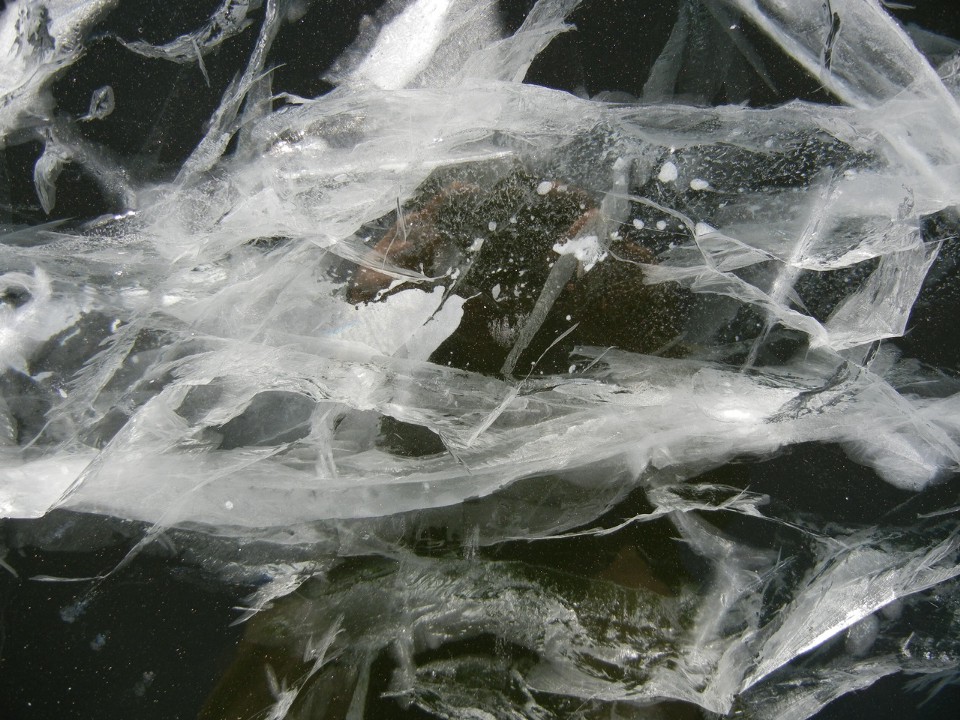
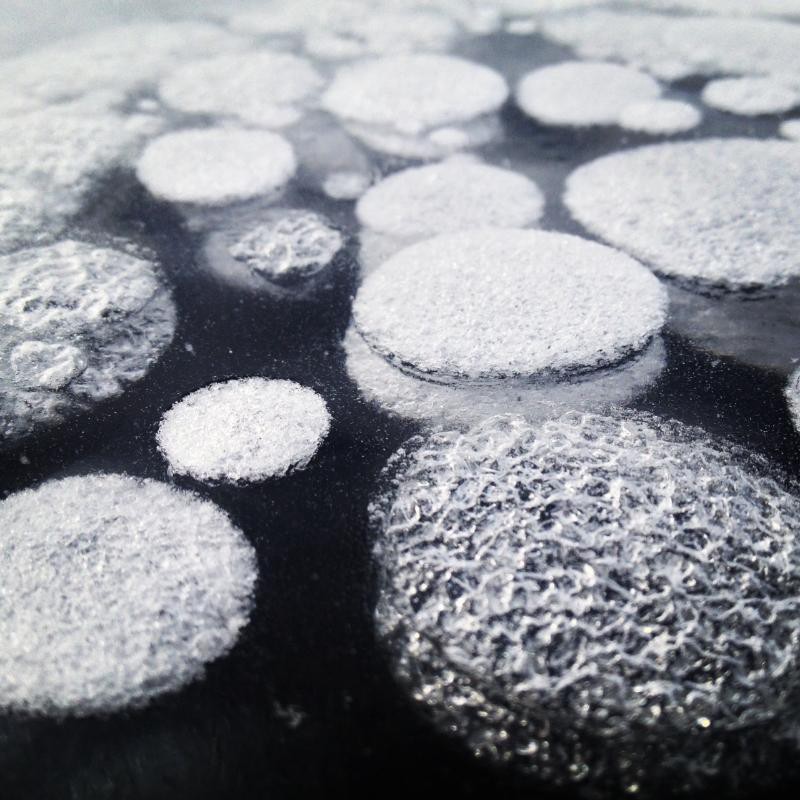
Scientists say CO2 directly makes ice more brittle
and susceptible to melting. When ice melts earlier, it intensifies global warming, as the Earth loses more of its ability to reflect solar rays. In another spot along the shore of Dillon Reservoir in Summit County, Colorado, pancake-shaped methane bubbles from decomposing vegetation were temporarily halted during their journey to the atmosphere. Several
suggest that large reservoirs are significant sources of heat-trapping greenhouse gas pollution. (Photos: Bob Berwyn)
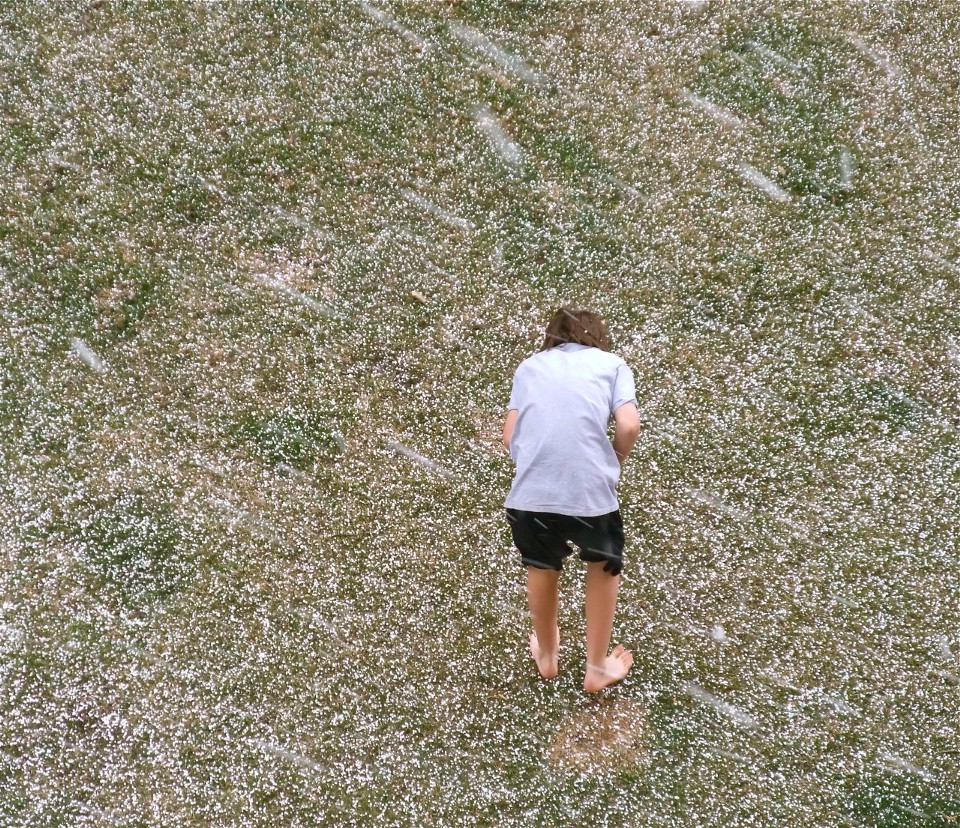
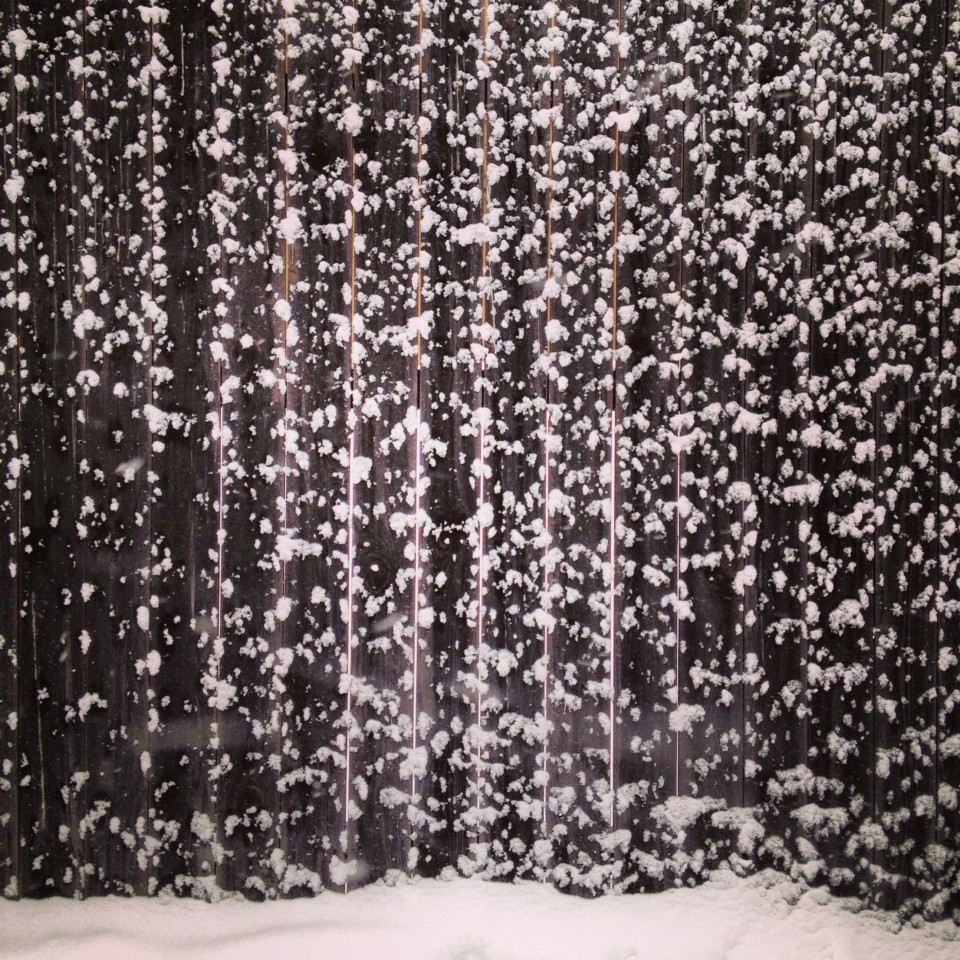
My son Dylan raced outside during a May thunderstorm a few years ago in Frisco, Colorado, when the clouds unleashed a torrent of Graupel, little pellets of snow with the consistency of styrofoam. At right, flakes clings precariously to the the rough fibers of a wooden fence in a pattern that’s a familiar and soothing sight to people who live in snowy zones. (Photos: Bob Berwyn)
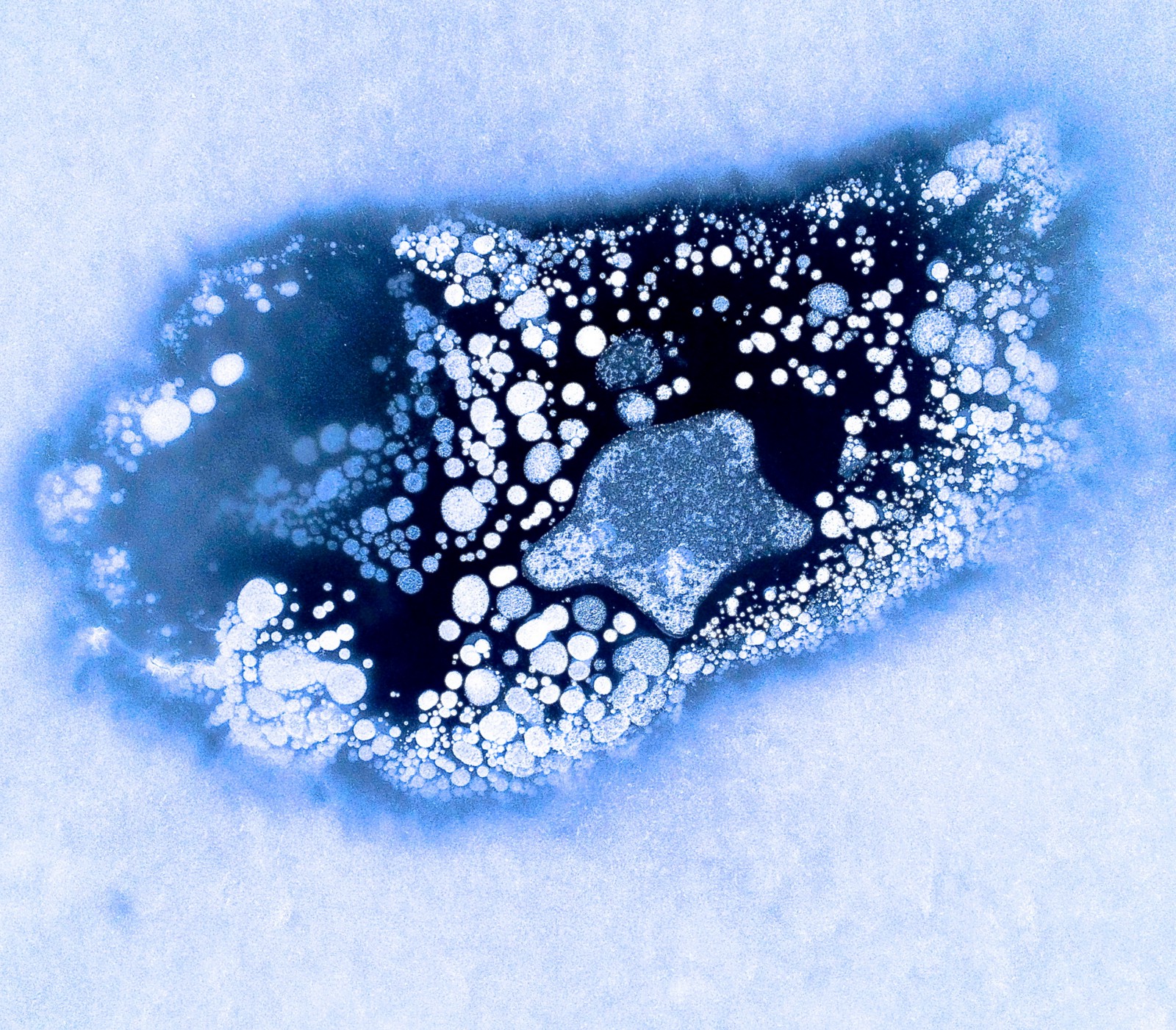
Frozen gas bubbles from decomposing organic materials at the bottom of Dillon Reservoir. (Photos: Bob Berwyn)
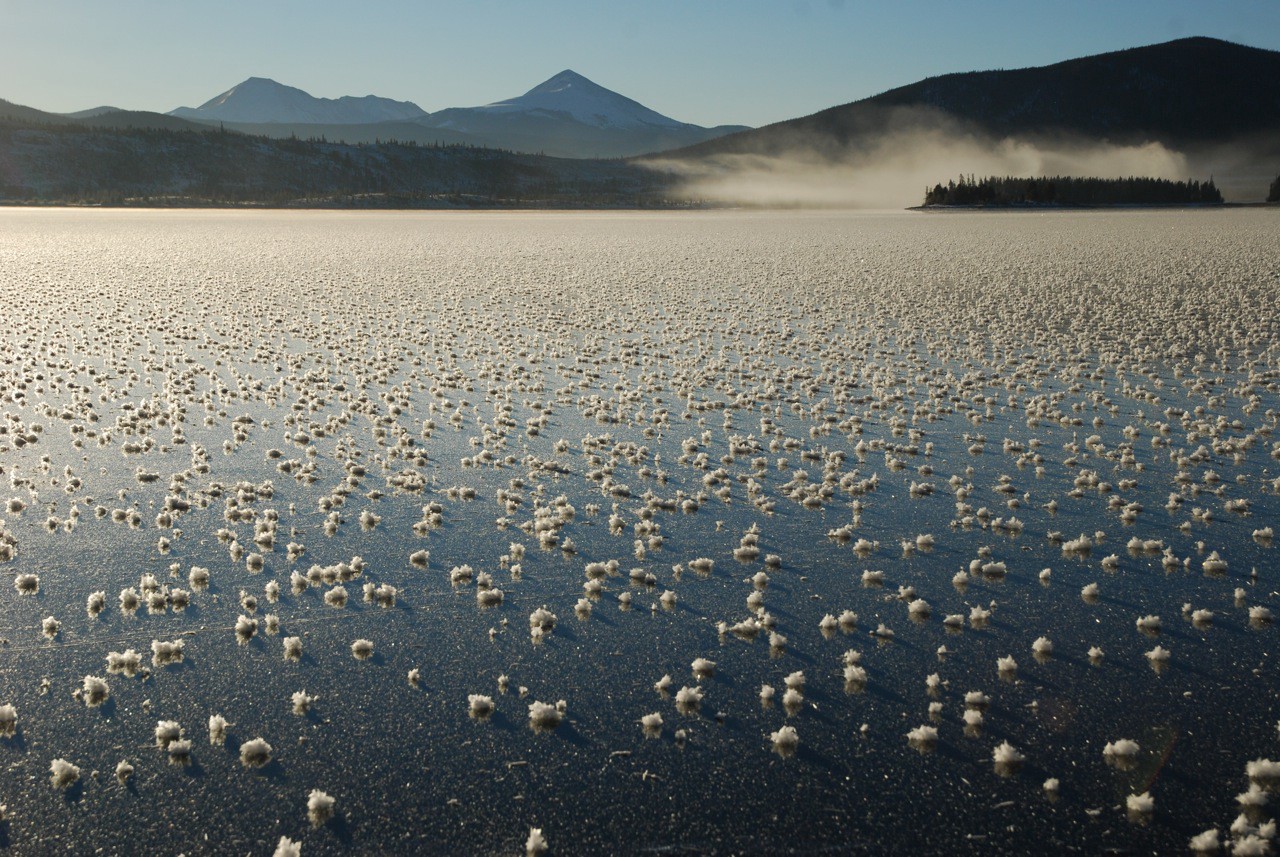
In fall or early winter, the cryosphere expands, as thin ice starts to cover oceans, rivers, and lakes. Before the ice gets too thick, the temperature contrast between the warmer water and the cold atmosphere makes conditions just right for the formation of surface crystals like this field of frost flowers on Dillon Reservoir, in the Rocky Mountains of Colorado. Scientists who study formations in the Arctic are discovering that the crystals play a role in an exchange of gases from water to the air, including heat-trapping greenhouse gases. (Photo: Bob Berwyn)
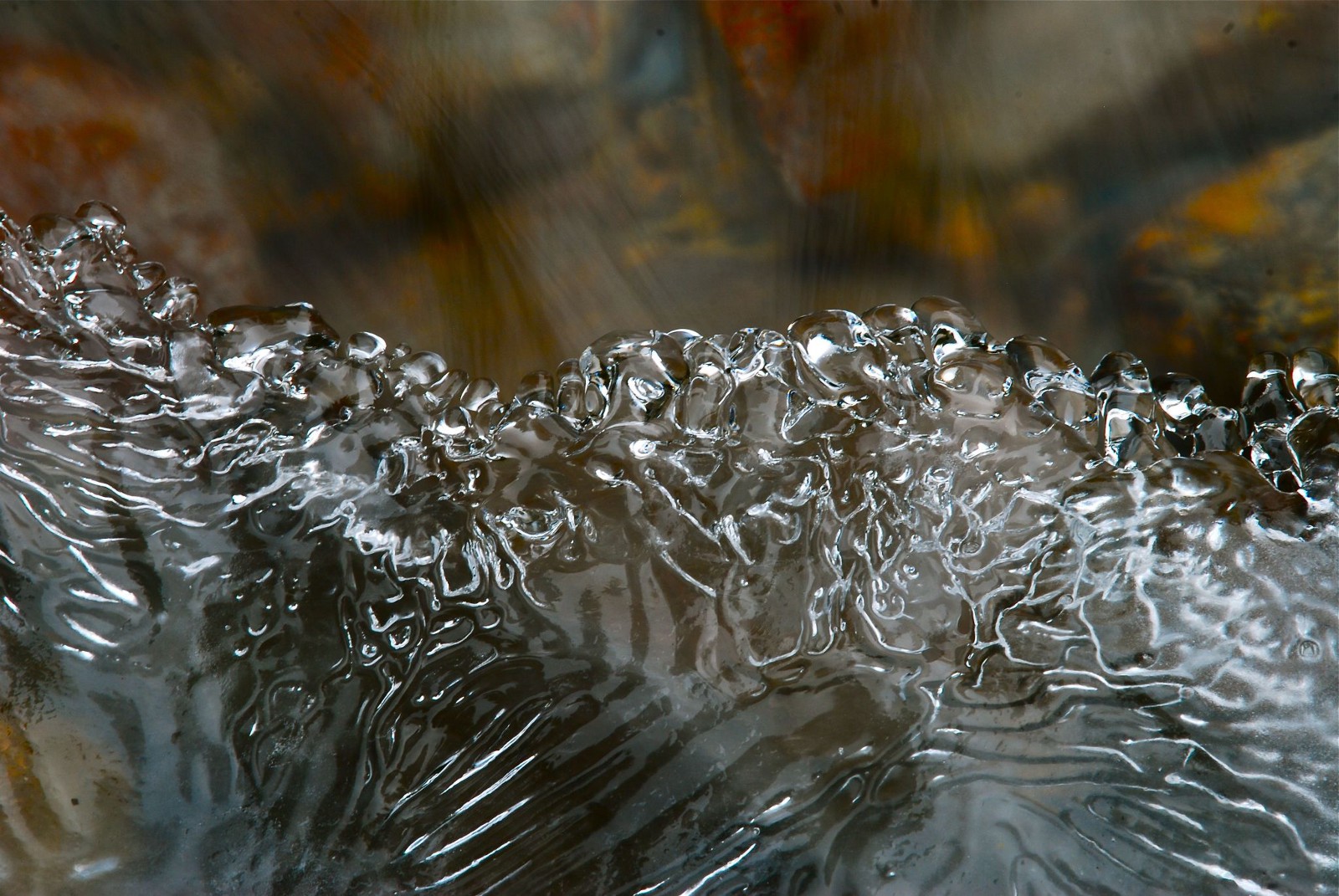
A skein of ice settles across the Snake River as winter falls near Keystone, Colorado. (Photo: Bob Berwyn)
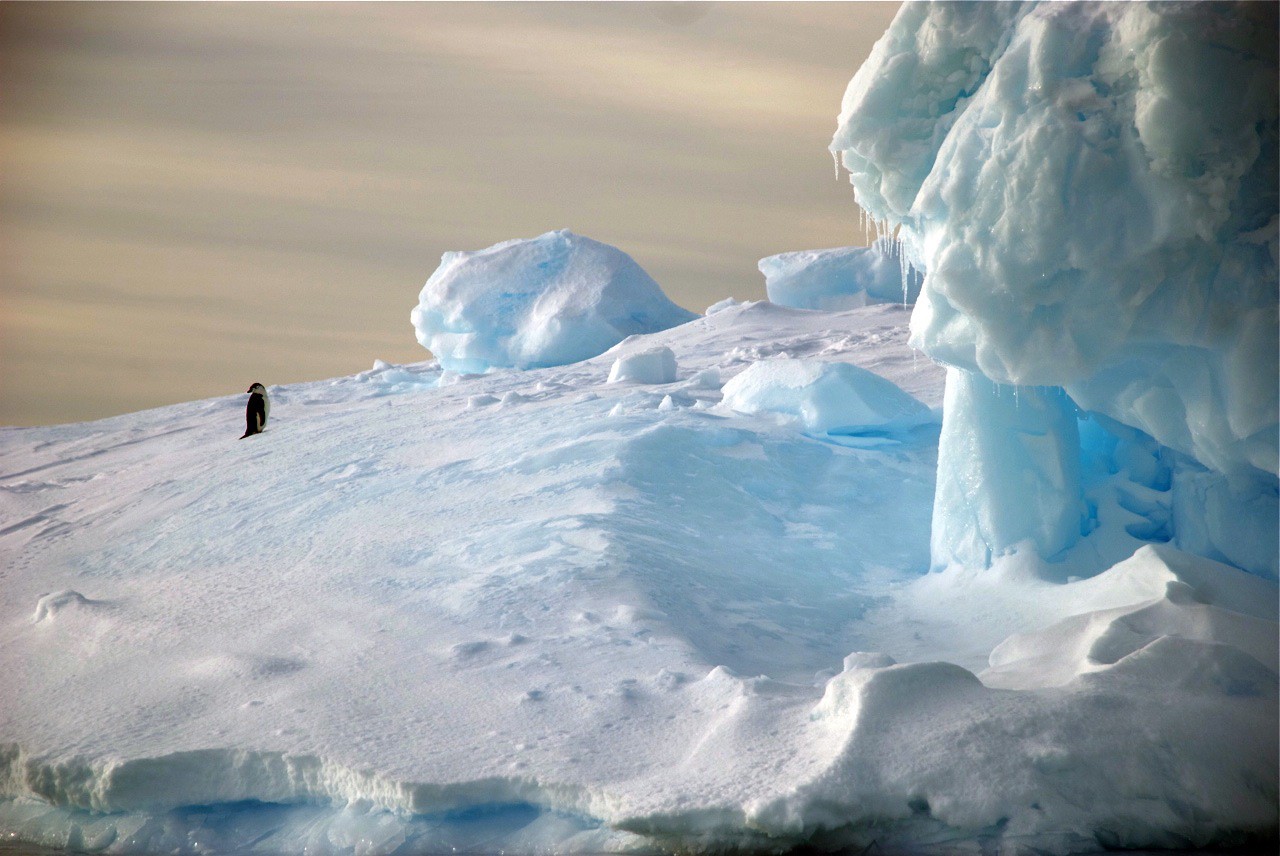
A chinstrap penguin surveys his domain near the shore of the Antarctic Peninsula. Some penguin species have already been displaced by the decline of ice in the region, and many populations will lose habitat in the decades ahead. (Photo: Bob Berwyn)





